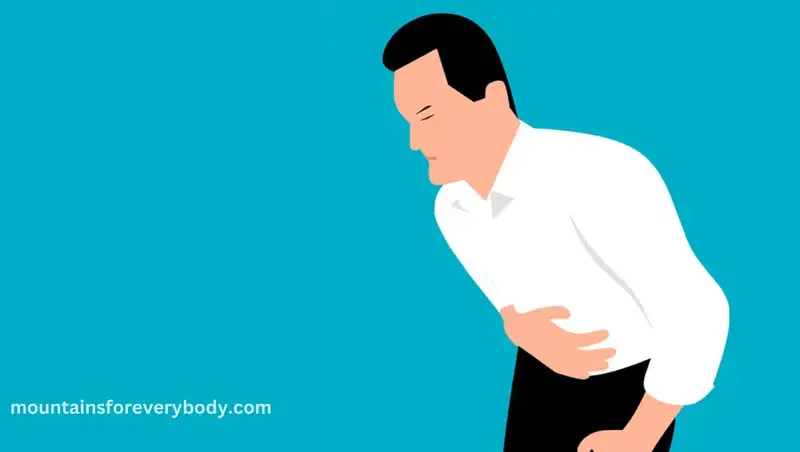We are more or less all familiar with the effects of altitude when we go into mountains. In some cases this may develop in acute mountain sickness. But did you know that there is such a thing as reverse altitude sickness?
So what this is about, what is reverse altitude sickness? Why there is no much information about it in the western world?
High altitude de-acclimatization syndrome, or reverse altitude sickness may develop when you return home after a long period of living at a high elevation. It is real and it includes a number of symptoms. These can be headache, fatigue, insomnia, sleepiness, abdominal pain, insomnia, cough, throat pain, chest tightness, and even memory loss.

High-altitude de-acclimatization syndrome (HADAS) testing
There were experiments in China related to this issue. In one of them, there were 2 groups returning from approximately 6 months of seasonal work at an altitude of 3650 m.
There was also a comparison with a control group who did not visit high altitude. So in those two groups returning from Tibet, symptoms peaked on day 3 after returning.
- In 50 to 73% of all subjects the common symptoms of fatigue, dizziness, and coughing were observed.
- Hematologic parameters showed hematocrit peaking while at altitude in 57.9% cases, and returning to baseline by the 100th day after descent in 43.9% cases.
- White blood cell count peaked on day 3 of return and were higher than high altitude baselines.
From these data it follows that recovery process for those who suffered high-altitude de-acclimatization syndrome is long and it may exceed 100 days.
There are more studies of that type, you can check for example this Regular Observation of De-Acclimatization...
So the point is, you can get sick coming down from high altitude. This is a real and well-documented phenomenon. People from low altitudes can experience a large number of possible symptoms of HADAS after returning home from a longer period at higher altitude.
This reverse altitude sickness effect is studied mostly in China. The reason for this is because of many (this means millions) temporary workers that migrate from their low altitude homes to high elevations, and then come back after months there.
It appears that the same syndrome happens to people who have evolved through generations to live at high altitude, and when they move to far lower elevations.
However, from what I read in a research text, these effect should be different for Tibetans and Andean people. The latter have a higher oxygen saturation in their blood than lowlanders no matter if they are born at high or low altitude.
On the other hand, Tibetans have a level of hemoglobin similar to lowlanders. But it is claimed in the article that they breathe faster and also produce more nitric oxide that promotes widening of the blood vessels. Because of this, blood is carried more efficiently through the body.
What are the symptoms of reverse high altitude sickness (HADAS)? Can HADAS be treated?
I already mentioned some symptoms above, but the full list is much longer.
It includes the following: sleepiness, insomnia, unresponsiveness, memory loss, fidgetiness, headache, throat pain or discomfort, coughing, expectoration, chest tightness, flustering, increased appetite or decreased appetite, diarrhea, abdominal distention, abdominal pain, cardiovascular, hematological, lumbago, arthralgia, respiratory system abnormalities, and more.
In most serious cases, symptoms were present for years. This is a serious public health issue in China where millions of people are affected. So can it be treated?
There are studies, and one is described in this research paper. They used Shenqi pollen capsules (SPC) in subjects with HADAS in a multicenter, double-blinded, randomized, placebo-controlled study.
They concluded that this SPC treatment “significantly decreased the HADAS scores and reduced the incidence of symptom persistence.”
Summary
In conclusion, the reverse altitude sickness is a phenomenon well-known and documented in Asia.
It is studied in the areas where there is a seasonal migration of workers from lower to higher elevations where they stay for months and then go back home. It turns out that full recovery can last more than 100 days.
This syndrome is not much discussed in the circles of people who go to Everest and similar high mountains. They also spend spend lots of time on very high elevations before going home. It seems this is still not long enough, this is about 2 to 2.5 months maximum. If you know more, do let us know.
For more texts of this type please check under the category FAQs here in the site. You have new texts about outdoors added here regularly, this is why you might want to bookmark this site and come again.
Subscribe to my weakly newsletter and stay informed, the subscription form is given below. Thank you for reading and have a nice day.
Leave a Reply